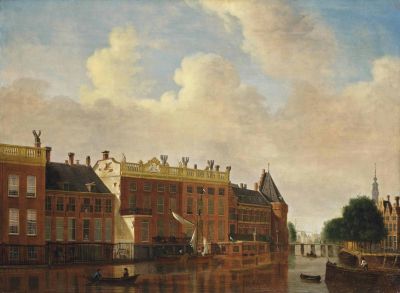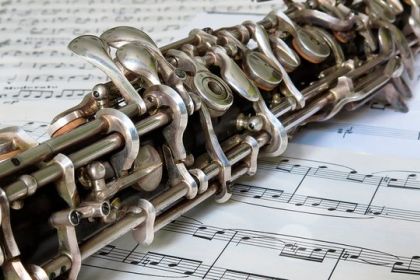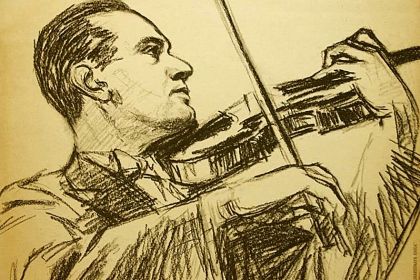ORCHESTRA
Amsterdam's free spirit for the Italian virtuoso

A view from the Binnen-Amstel towards the Kloveniersburgwal by Jan Ekels
Pietro Locatelli (1695—1764), Italian violinist and composer, was one of the first great violinists who practiced virtuosity for virtuosity’s sake, thereby extending the technical vocabulary of the violin.
At fourteen, Locatelli became a member of the instrumental ensemble of Santa Maria Maggiore in Bergamo. At sixteen he went to Rome, perhaps to study with Arcangelo Corelli, though he may well have studied with a number of other eminent musicians in and around the city at that time.
For years, Locatelli toured widely while refining his skills. Starting with 1725, his name turns up successively in Venice, Munich, Frankfurt, and Berlin, most likely due to the fact of his giving concerts during travels and receiving rapturous acclaim for his virtuosic playing.
However, Locatelli was unable to settle anywhere and did not wish to spend the rest of his life as a court musician. In 1729 he decided to move to Amsterdam, a city lacking a court but which did offer ample opportunities for him to publish his compositions.
Amsterdam was known throughout Europe for this aspect of its music scene, and many Italian composers, including Vivaldi, published their music there. Having had every composition published, Locatelli lived and worked there as an 'Italian music master' until his death.
Listen to Pietro Locatelli's Violin Concerto No. 8 in E minor performed by I Musici:
Amsterdam offered Locatelli many advantages: he was able to work there as a free musician, unfettered to a church or court. He could compose whatever and whenever he wanted which was highly exceptional for the time. He gave up public performance in favor of regular concerts for a group of wealthy amateurs.
Locatelli preferred not to have any professional musicians attend, a suspected reason for which is that he was afraid of their imitating him. An Englishman, who heard him one evening, wrote:
"He is so afraid of people learning from him, that he won't admit a professed musician into his concert".
His playing was particularly admired for its double stops (playing two strings at once), and he frequently used special tunings for special effects. As a composer, Locatelli was most drawn to the sonata and concerto forms, both of which reveal him to have been capable of elegant and expressive melody.



